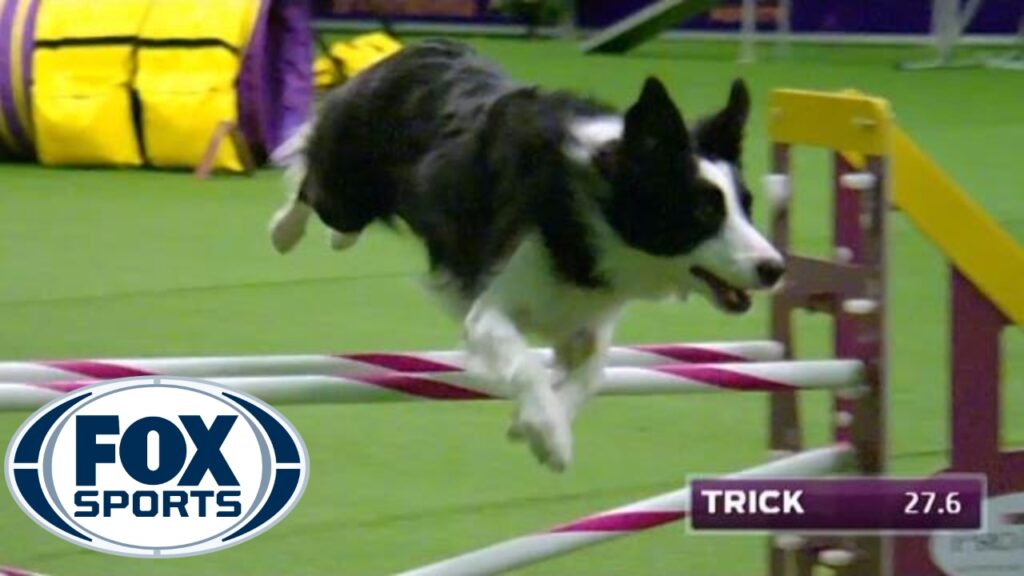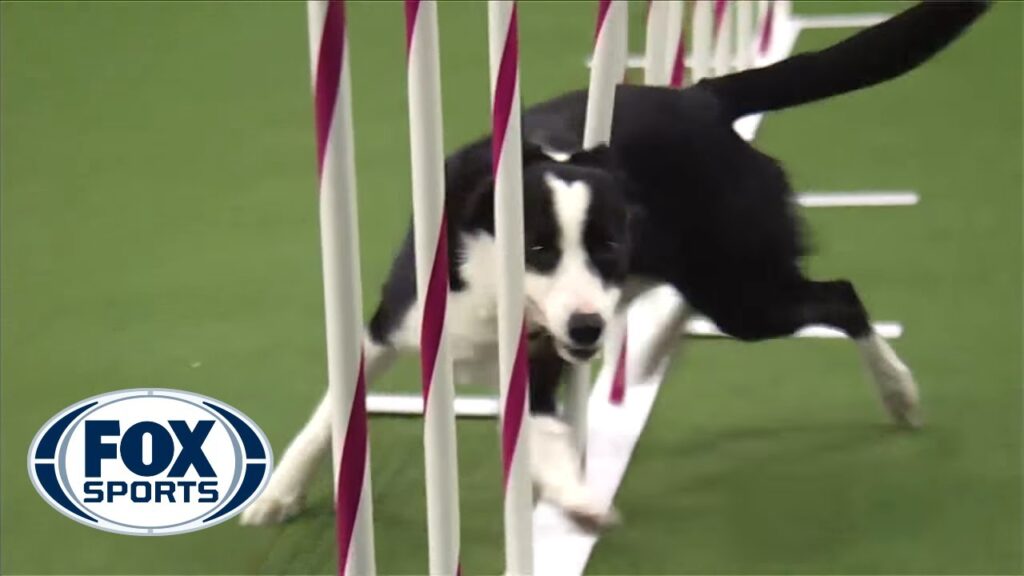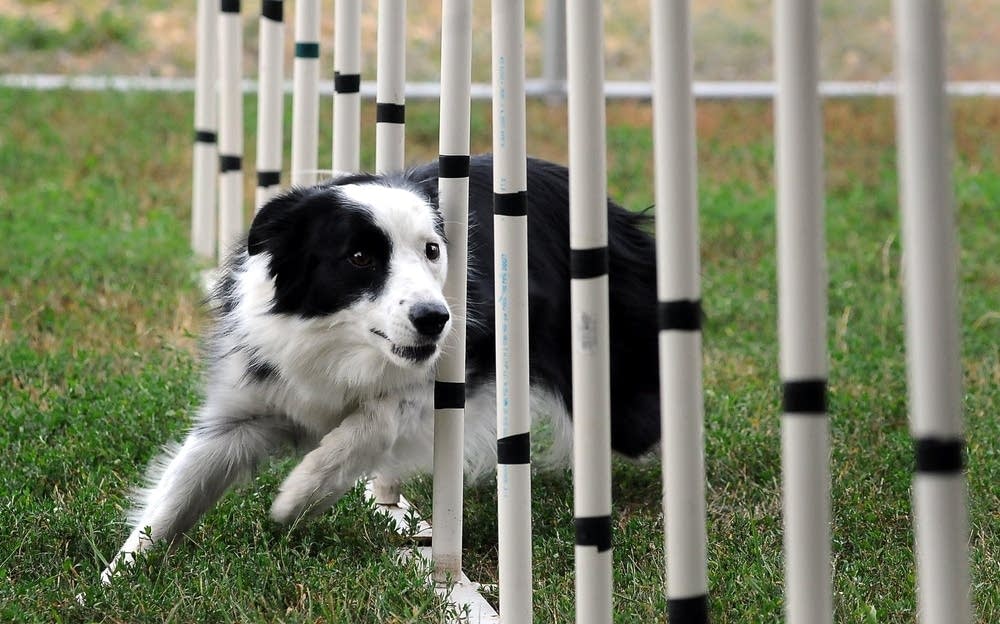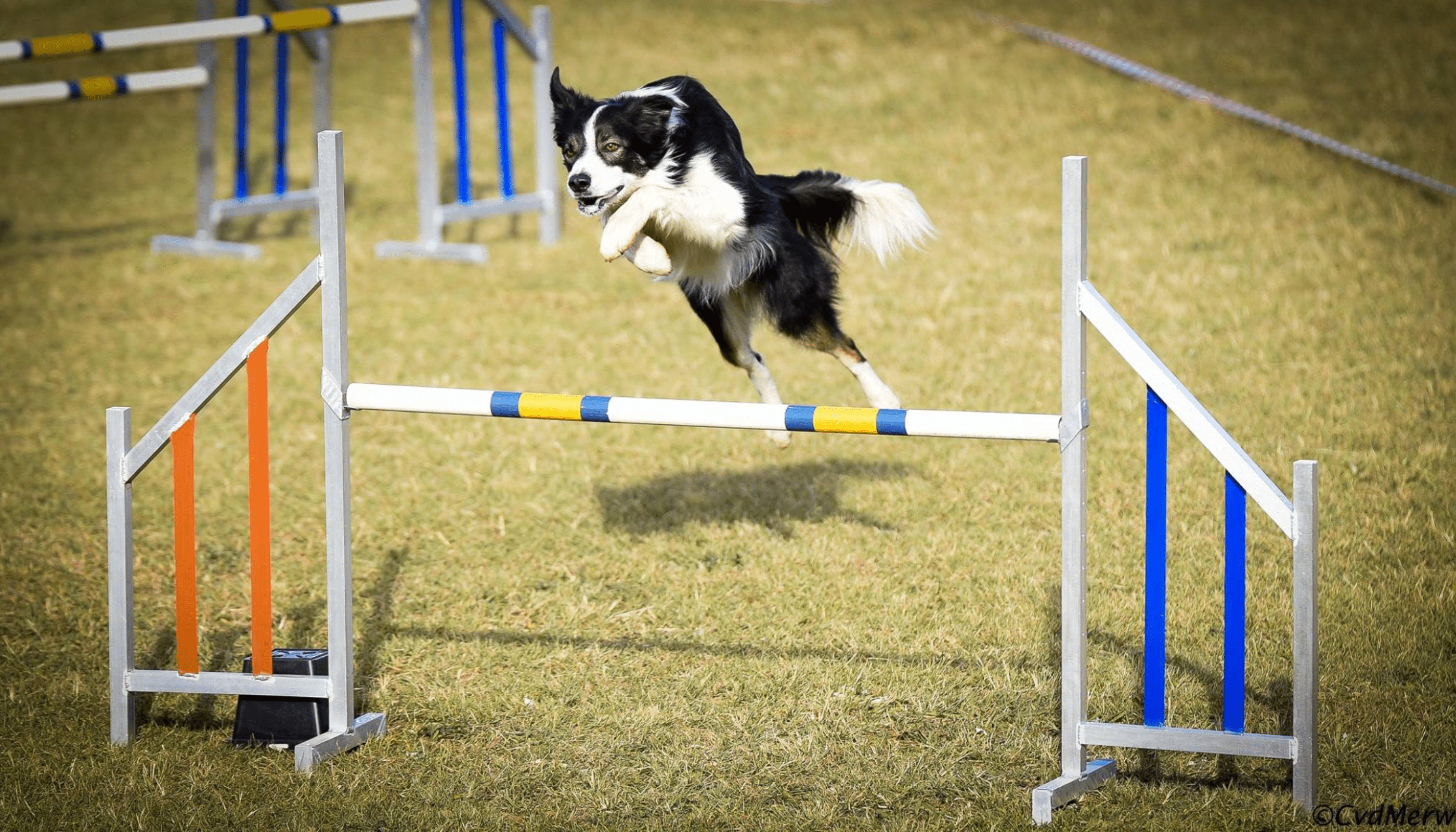Have you ever wondered how you can train your Border Collie to become a master at agility competitions? Well, you’re in luck! In this article, we’re going to dive into the world of dog training and discover the secrets to turning your furry friend into an agile superstar. Get ready to learn all the tips and tricks you need to know!
Training a Border Collie for agility competitions can be an incredibly fulfilling and exciting experience. These intelligent and energetic dogs are perfect for this type of sport as they excel in speed, agility, and obedience. But where do you begin? Well, first you’ll need to understand the basics of agility training. It involves teaching your Border Collie to navigate various obstacles like jumps, tunnels, and weave poles in a race against the clock. It requires a strong bond between you and your dog, as well as a lot of patience and dedication. In this article, we’ll explore different training techniques and share valuable insights to prepare you for the exhilarating world of agility competitions. So buckle up, because you’re about to embark on an incredible journey with your four-legged companion!

Preparing for Agility Competitions
Agility competitions are thrilling events where dogs and their handlers showcase their skills and athleticism. If you have a Border Collie, known for their intelligence and agility, training them for agility competitions can be a rewarding and fulfilling experience. To embark on this journey, there are several key aspects to consider.
Understanding Agility Competitions
Before diving into training, it’s essential to understand what agility competitions entail. Agility courses are designed with various obstacles such as jumps, tunnels, weave poles, and contact obstacles like A-frames and dog walks. Dogs are required to navigate these obstacles in a set sequence, following their handler’s cues and completing the course within the fastest time possible.
Agility competitions are not only about speed but also precision and teamwork between the dog and handler. It’s important to familiarize yourself with the rules, scoring criteria, and different agility organizations such as the American Kennel Club (AKC), United States Dog Agility Association (USDAA), and the Agility Association of Canada (AAC).
Choosing the Right Border Collie
Not all Border Collies are cut out for agility competitions. When selecting a Border Collie for agility, it’s crucial to consider their genetics, temperament, and overall health. Look for a Border Collie from working lines or with a proven performance record in agility. These dogs are bred for athleticism and have the drive and focus necessary for agility competitions.
Additionally, assess the dog’s temperament. They should be confident, adaptable, and eager to please. Since agility requires intense concentration and training, a highly trainable Border Collie will make the learning process smoother. Ensure that the dog is healthy, without any physical limitations that could hinder their performance in agility.
Assessing Your Dog’s Abilities
Each dog is unique, and it’s important to assess your Border Collie’s abilities before starting agility training. Begin by evaluating their general obedience skills and willingness to learn. These foundational skills will form the basis of their agility training.
Consider your dog’s physical capabilities as well. A Border Collie in good physical condition will have an easier time navigating the agility obstacles. Observe their coordination, balance, and stamina. This assessment will help you tailor the training program to your dog’s needs and abilities.
Building Foundation Skills
Establishing a strong foundation is crucial for successful agility training. These skills lay the groundwork for your Border Collie’s future performances and ensure their safety and success on the agility course.
Mastering Basic Obedience Commands
Agility requires precise control and communication between the dog and handler. Start by teaching your Border Collie basic obedience commands such as sit, stay, down, and come. These commands form the basis of your communication and enable you to provide directions and guidance during agility training and competitions.
Training basic obedience commands should be positive and reward-based. Use treats, toys, and praise to reinforce desired behaviors. Consistency and repetition are key to instilling these commands in your Border Collie’s repertoire.
Teaching Proper Technique for Jumps
Jumping is a fundamental aspect of agility competitions. Teaching your Border Collie proper jumping technique is essential to avoid injuries and maximize their performance.
Start with low jumps and gradually increase the height as your dog gains confidence and strength. Teach them to approach the jump with speed, maintain a straight line, and clear the obstacle cleanly. Use positive reinforcement to encourage your dog to jump with enthusiasm and accuracy.
Introducing Tunnels and Chutes
Tunnels and chutes are common obstacles in agility courses and require your Border Collie to enter and navigate through them. Proper introduction and familiarization with these obstacles are crucial for your dog’s confidence and performance.
Start with open tunnels and gradually progress to collapsible tunnels and chutes. Use treats or toys to entice your Border Collie to enter the obstacle, and reward them for successfully navigating through it. Make the experience positive and enjoyable, building your dog’s trust and enthusiasm for these obstacles.
Developing Agility Skills
Once your Border Collie has mastered the foundation skills, it’s time to focus on developing their agility-specific techniques and abilities. These skills will enhance their speed, balance, and overall performance on the agility course.
Training for Speed and Stamina
Agility competitions require dogs to complete the course within a specified time limit. To improve speed and stamina, incorporate interval training into your Border Collie’s exercise routine. Interval training involves alternating between high-intensity bursts of activity and periods of rest or lower intensity exercise.
Set up short courses or sequences of agility obstacles and practice running them with your dog at a fast pace. Gradually increase the duration and intensity of these training sessions to build your Border Collie’s endurance and speed.
Improving Balancing and Agility
Agility courses often include balance-related obstacles such as the dog walk, A-frame, and teeter-totter. Teaching your Border Collie to navigate these obstacles safely and confidently is crucial.
Start by introducing these obstacles at a low height and gradually increase it as your dog becomes more comfortable. Use positive reinforcement and rewards to encourage your Border Collie to maintain a steady pace and proper technique on these obstacles.
Practicing Weave Poles
Weave poles are a challenging obstacle for many dogs. Teach your Border Collie to weave through poles in a serpentine pattern. Start with widely spaced poles and gradually decrease the spacing as your dog becomes more proficient.
Break down the weaving motion into smaller steps and reward your Border Collie for each successful attempt. Patience and consistency are key during this training process. With regular practice and positive reinforcement, your Border Collie will learn to weave with speed and accuracy.
Fine-tuning Performance
Refining your Border Collie’s agility skills involves perfecting their handling techniques, improving their performance on contact obstacles, and increasing their focus and concentration during training and competitions.
Refining Handling Techniques
Handling techniques are the cues and directions you provide to guide your Border Collie through the agility course. Take the time to learn and practice different handling techniques such as front crosses, rear crosses, and blind crosses.
Consistency and clear communication are crucial during handling. Focus on your body language, timing, and precision to ensure your Border Collie understands your cues and can execute them accurately on the course. Practice these techniques in different training scenarios and courses to improve your handling skills and your dog’s responsiveness.
Perfecting Contact Obstacles
Contact obstacles, such as the A-frame, dog walk, and teeter-totter, require your Border Collie to touch designated contact zones with their paws. These obstacles test your dog’s control, balance, and accuracy.
Train your Border Collie to navigate these obstacles while maintaining proper contact with the contact zones. Reward them for touching the designated areas and reinforce the behavior with positive reinforcement. Consistent training and repetition will help your Border Collie perfect their behavior on contact obstacles.
Increasing Focus and Concentration
Agility competitions can be distracting for dogs, with various sights, sounds, and smells. Increasing your Border Collie’s focus and concentration during training and competitions is essential for success.
Incorporate distractions into your training sessions to simulate the competition environment. Gradually introduce noises, toys, or other dogs while your Border Collie performs agility tasks. Teach your dog to maintain their focus on you and the course despite these distractions. Patience and persistence will help your Border Collie develop a strong focus and concentration.

Advanced Training Techniques
Once your Border Collie has mastered the foundational and intermediate agility skills, you can advance to more complex and challenging training techniques. These techniques will further refine your dog’s agility abilities and prepare them for different types of courses.
Advanced Jumping and Weaving Techniques
Advanced jumping techniques, such as long jumps and spread jumps, add complexity and variety to your Border Collie’s training. Gradually introduce these obstacles and adjust the distance or configuration to challenge your dog’s jumping skills.
Similarly, advanced weaving techniques, like speed weaving and distance weaving, require your Border Collie to navigate weave poles at varying speeds and distances. Gradually increase the complexity of the weave pole arrangements to challenge your dog’s weaving skills.
Training for Different Types of Courses
Agility courses come in various formats, such as standard, jumper, and snooker courses. Each course requires different skills and strategies. Train your Border Collie on different types of courses to expose them to various challenges and scenarios.
Practice running different course types to improve your dog’s adaptability and your handling skills. Analyze and strategize the best routes and approaches for each course. The more exposure your Border Collie has to different courses, the more confident and versatile they will become.
Introducing Distance and Directional Commands
As your Border Collie becomes more advanced in their agility training, you can introduce distance handling techniques. These techniques involve controlling your dog’s movements from a distance, without being in close proximity to them.
Teach your Border Collie directional commands, such as left, right, and out, to guide them through the course with minimal physical contact. Incorporate distance exercises into your training sessions, gradually increasing the distance between you and your dog. This will improve your dog’s responsiveness to your commands and enhance their ability to navigate the course independently.
Overcoming Challenges
Agility training is not without its challenges. It’s important to address common issues such as fear and anxiety, problem behaviors, and building confidence in the competition ring.
Dealing with Fear and Anxiety
Some dogs may face fear or anxiety when confronted with certain agility obstacles or in the competition environment. It’s crucial to create a positive and supportive training environment to help your Border Collie overcome these challenges.
Gradual exposure and desensitization to the fearful stimuli, combined with positive reinforcement, can help your dog build confidence and overcome fear or anxiety. Seek professional guidance if fear or anxiety persists, as specialized training techniques or behavioral modification may be necessary.
Addressing Specific Problem Behaviors
Agility training may uncover specific problem behaviors in your Border Collie. These could include excessive barking, chasing distractions, or refusing obstacles. Identify and address these behaviors through positive reinforcement training methods.
Focus on rewarding desired behaviors and redirecting unwanted behaviors. Seek the assistance of a professional trainer if you encounter persistent problem behaviors that require specialized training techniques.
Building Confidence in the Competition Ring
Entering the competition ring can be intimidating for both dogs and handlers. Building your Border Collie’s confidence in the competition environment is essential to ensure their success and enjoyment.
Increase exposure to competition-like scenarios by participating in practice sessions and mock competitions. Gradually increase the level of complexity and distractions to mimic the competition environment. This will help your Border Collie become more confident and comfortable in the ring.

Maintaining Physical and Mental Health
To excel in agility competitions, your Border Collie needs to be physically and mentally fit. Establishing a balanced exercise routine, providing mental stimulation and enrichment, and preventing injuries are crucial for your dog’s overall well-being.
Creating a Balanced Exercise Routine
Border Collies are high-energy dogs that thrive on exercise. Design a balanced exercise routine that includes a combination of physical activity, mental stimulation, and rest. Consider activities such as running, playing fetch, obedience training, and interactive puzzle toys. Regular exercise keeps your Border Collie physically fit and mentally stimulated.
Providing Mental Stimulation and Enrichment
In addition to physical exercise, mental stimulation is vital for Border Collies. Engage your dog’s mind with interactive toys, puzzle games, and obedience training sessions. Incorporate scent work, trick training, or agility-related activities during your training sessions to keep your dog mentally engaged and challenged.
Preventing Injuries and Proper Rest
Agility training and competitions can be physically demanding on your Border Collie. Take precautions to prevent injuries by ensuring the proper warm-up and cool-down routines. Watch for signs of fatigue, discomfort, or pain during training sessions and adjust accordingly.
Allow your Border Collie ample rest and recovery time between training sessions and competitions. Adequate rest is essential to prevent overexertion and injury. Ensure your dog has a comfortable and quiet space to rest, sleep, and recuperate.
Gaining Competition Experience
To truly prepare your Border Collie for agility competitions, gaining experience in different competition settings is crucial. Gradually progress from practice sessions and local small-scale competitions to regional and national events.
Participating in Practice Sessions and Mock Competitions
Practice sessions and mock competitions provide valuable opportunities for your Border Collie to practice in a simulated competition setting. Engage with local agility clubs or training groups to find practice sessions or mock competitions near you. These events allow you to assess your dog’s performance, identify areas for improvement, and build confidence in real-life competition scenarios.
Entering Local Small-Scale Competitions
Local small-scale competitions are a great starting point for your Border Collie’s competitive journey. These events have a more relaxed atmosphere and provide an opportunity for you and your dog to gain experience without the pressure of larger, high-stakes events.
Enter local agility trials or fun matches to expose your Border Collie to the competition environment. These events allow you to evaluate your dog’s performance and identify areas for improvement.
Preparing for Regional and National Competitions
Once your Border Collie has gained experience in local competitions, you may consider entering regional or national agility competitions. These events bring together top competitors from different regions and offer more challenging courses and competition levels.
Carefully select the events that align with your dog’s skill level and gradually work your way up to more competitive levels. Seek guidance from experienced handlers or trainers to assist you in planning and preparing for these higher-level competitions.

Working with a Professional Trainer
Working with a professional agility trainer offers invaluable guidance, expertise, and feedback. A professional trainer can help you set goals, develop a training plan, and fine-tune your Border Collie’s performance.
Seeking Expert Guidance and Advice
Look for a certified agility trainer who specializes in working with Border Collies or other high-drive breeds. They have the experience and knowledge to guide you in designing a training program specific to your dog’s needs and abilities.
Attend agility workshops or seminars conducted by expert trainers to acquire additional insights and training techniques. Gain exposure to different training methods and approaches that can benefit your Border Collie’s agility prowess.
Setting Goals and Developing a Training Plan
A professional trainer can assist you in setting realistic goals for your Border Collie’s agility training. Whether your aim is to compete at a certain level or enhance specific skills, they can help you develop a training plan tailored to your dog’s strengths and weaknesses.
A training plan should include a structured timeline, appropriate exercises, and progressive challenges to ensure your Border Collie continues to improve and adapt to higher levels of agility.
Receiving Feedback and Evaluations
In agility training, feedback and evaluations from a professional trainer are invaluable. Regularly seek their input on your dog’s performance, handling techniques, and course analysis. Embrace constructive criticism and use it as an opportunity to refine your skills and improve your Border Collie’s performance.
Maintaining a Strong Bond with Your Border Collie
Agility training strengthens the bond between you and your Border Collie. Foster a positive and trusting relationship with your dog throughout the training process.
Using Positive Reinforcement and Rewards
Positive reinforcement, such as treats, toys, and praise, is crucial to motivate and reward your Border Collie during training. Use rewards to celebrate success and encourage desired behaviors. This positive and reward-based approach reinforces the bond between you and your dog.
Building Trust and Communication
Establishing trust and effective communication is key to a successful partnership in agility. Engage in regular training sessions that focus on building trust, as well as understanding and responding to your Border Collie’s needs and cues.
Listen to your dog’s body language and non-verbal signals. Develop clear, consistent, and positive communication through your voice, hand signals, and body language. This deepens the bond and enhances your Border Collie’s ability to understand your commands and directions.
Creating a Strong Partnership
Agility competitions are a team effort between you and your Border Collie. Treat your dog as a partner rather than just a trainee. Include games, playtime, and bonding exercises in your training routine to strengthen your partnership.
Spend quality time with your Border Collie outside of agility training. Engage in activities that you both enjoy, such as hiking, swimming, or fetch. Nurturing a strong partnership enhances the connection between you and your Border Collie, both on and off the agility course.

Dealing with Setbacks and Disappointments
Agility training is an ongoing journey with its fair share of setbacks and disappointments. Embrace these challenges as opportunities for growth and learning.
Learning from Mistakes and Failures
Mistakes and failures are part of the agility training process. Embrace them as learning experiences and opportunities to identify areas for improvement. Analyze the reasons behind setbacks and adjust your training strategies accordingly.
Seek guidance from trainers or experienced handlers to help troubleshoot specific challenges or obstacles you encounter. Remember that even the most successful agility teams have faced setbacks along their journey.
Staying Motivated and Encouraged
Agility training requires dedication, perseverance, and a positive mindset. Set realistic expectations, celebrate small achievements, and keep a positive attitude throughout the training journey.
Surround yourself with like-minded individuals who share your passion for agility. Engage in agility communities, events, or online forums to connect with fellow enthusiasts. Their support, encouragement, and shared experiences can help to keep you motivated during challenging times.
Adapting to Unexpected Challenges
Agility competitions can present unexpected challenges and obstacles. Be prepared to adapt and make quick decisions to overcome these hurdles. Agility requires you to think on your feet and make split-second judgments.
Continue to work on your problem-solving skills and agility handling techniques to navigate unexpected situations with confidence and adaptability. Embrace these challenges as opportunities to further develop your skills and deepen your connection with your Border Collie.
Traveling and Logistics for Competitions
As you progress to higher-level competitions, traveling and logistics become important considerations. Proper planning and organization ensure your Border Collie is comfortable and prepared for the competition experience.
Planning for Travel and Accommodations
Research and plan your travel arrangements well in advance of the competition. Find pet-friendly accommodations that offer comfortable and safe accommodations for you and your dog.
Consider the distance, travel time, and necessary stops for rest and exercise along the way. Prepare the necessary documents, such as vaccination records, before traveling to comply with competition and transportation regulations.
Ensuring Proper Nutrition and Hydration
Maintaining proper nutrition and hydration is essential during competition weekends. Pack a sufficient supply of your Border Collie’s regular food and treats to ensure consistency in their diet.
Provide access to fresh water and take breaks for hydration throughout the day. Monitor your Border Collie’s food intake and adjust accordingly to meet their energy requirements during the intense competition days.
Organizing Equipment and Supplies
Make a checklist of all the equipment and supplies you will need for the competition. This may include agility gear, such as jumps, tunnels, weave poles, and contact obstacles, as well as grooming supplies and registration documents.
Pack all necessary items in an organized manner to avoid last-minute scrambling. Ensure that your Border Collie’s equipment is well-maintained and in good condition before the competition.
Safety and Ethics in Agility Competitions
Agility competitions prioritize the safety and well-being of all participants. Adhering to rules and regulations, prioritizing safety, and respecting fellow competitors are essential aspects of being an ethical competitor.
Adhering to Rules and Regulations
Familiarize yourself with the rules and regulations of the specific agility organizations and competitions you participate in. Ensure that you and your Border Collie meet all eligibility criteria and follow the guidelines set by the organization.
Observe fair play and good sportsmanship. Avoid using any training methods or equipment that may be considered unethical or harmful to your dog.
Prioritizing Safety and Well-being
Always prioritize your Border Collie’s safety and well-being during training and competitions. Regularly inspect equipment for any defects or potential hazards. Monitor your dog’s hydration and temperature levels during training sessions and competitions.
Address any signs of fatigue, soreness, or discomfort promptly. Be prepared with a canine first aid kit and knowledge of basic first aid procedures.
Respecting Fellow Competitors
Respect fellow competitors and their dogs. Agility competitions are a community-oriented activity, and fostering a positive and supportive environment is crucial.
Avoid interfering with or distracting other competitors during their runs. Practice good etiquette and congratulate fellow handlers on their successes. Offer assistance or encouragement when needed.
Conclusion
Training a Border Collie for agility competitions is an exciting and fulfilling journey. By understanding the requirements of agility competitions, choosing the right Border Collie, building foundation skills, developing agility-specific techniques, and overcoming challenges, you and your dog can embark on a successful agility training experience.
Remember to always prioritize your Border Collie’s physical and mental health, maintain a strong bond through positive reinforcement and communication, and embrace setbacks as opportunities for growth. With patience, dedication, and the support of a professional trainer, you and your Border Collie can excel in agility competitions and continue to improve and grow together. So go out there and embrace the joy of agility competitions with your amazing Border Collie!